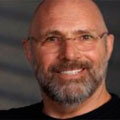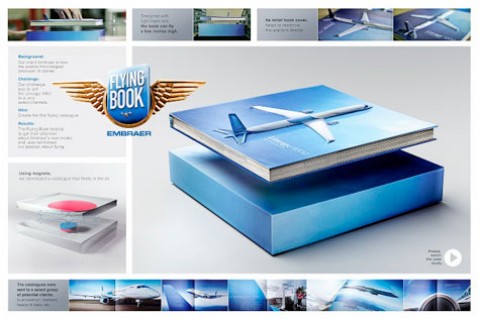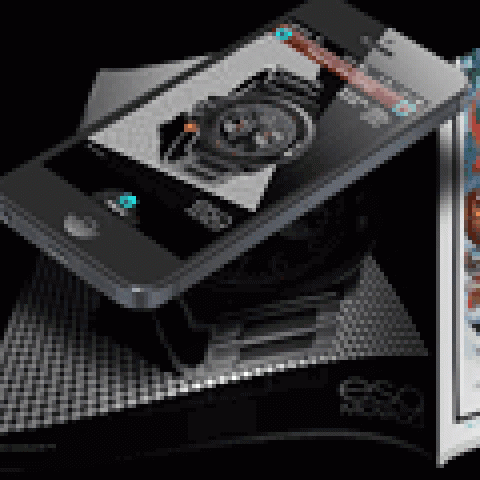
“If you read a lot and you’re genuinely curious about the world, you’ll go far in this profession because there simply aren’t that many people who are able to combine graphic design talent with genuine curiosity about the world.”
***
Michael Bierut is a partner in the New York office of the international consulting firm Pentagram. His graphic design work has been collected by major museums around the world. He’s served as the president of the AIGA’s New York chapter and of its national organization. He was inducted into the Art Directors Hall of Fame in 2003, received the AIGA Medal in 2006, and the Design Mind award from the Cooper-Hewitt National Design Museum in 2008. He is co-founder of the world’s biggest design blog, DesignObserver.com, the author of “79 Short Essays on Design” from Princeton Architectural Press, and on the faculty of Yale University’s School of Art and School of Management.
Beginnings
I decided when I was in high school that I wanted to become a graphic designer without ever having met one or really knowing that much about what they did. I liked art, and I particularly liked commercial art.
I’m from Ohio, and in my state the University of Cincinnati had a program in graphic design at their school of design. I got my degree there. And right after I graduated, I moved to New York and got my first job working with Massimo and Lella Vignelli at Vignelli Associates.
I worked there for over 10 years and then joined Pentagram. That was my second, and last, job.
Pentagram currently has 17 partners and probably just as many retired partners or ex-partners. So there’s an enormous body of work that’s been done on Pentagram’s behalf by people working at Pentagram for the past 35 or so years.
And because of that, our name is fairly well known, and a great deal of business comes from referrals.
But also, because of the way we’re structured, we actually don’t need that much work to stay busy and to run a good business. Our overhead is really low. We don’t have account executives or new business people.
Every one of those 17 partners is a working designer with clients. Each of the partners hires his or her own design team to support the work that they do.
Each team runs its own profit and loss. So each team is financially accountable, and tends to be very careful about how it uses money and how many people it hires to be as efficient as possible. As a result, each of those 17 studios within Pentagram really doesn’t need that much work to keep busy. It’s not like a typical multinational firm that has a pyramid structure where they need constant new business activity just to feed a big monster that consists of a lot of non-billing overhead people.
Influences
I could name thousands and thousands and thousands. While I was in school I interned for a guy in Cincinnati named Dan Bittman. He’s a star in Cincinnati, but isn’t as well known anywhere else, but he had a real influence on me. I also worked as an intern in Boston with Chris Pullman at WGBH. That had some influence on me I’d say. And then I’ve been working in these two jobs, my first job for 10 years with Lella and Massimo, and my second job, here at Pentagram, for 18 years and counting.
When I was younger I had dozens of heroes who ranged from the obvious people, like Paul Rand and Milton Glaser, to less obvious ones like Corita Kent and Don Trousdell. From classic designers like Armin Hofmann and Josef Müller-Brockmann, all the way to great Mad magazine illustrators like Don Martin or Mort Drucker.
You can see I’ve always had very eclectic tastes and have admired lots of different people. And now at Pentagram, I have six partners that I work with side-by-side. They’re just as influential on me today as anyone else.
Favorite Accomplishment
About 15 years ago, I was having a conversation with one of my partners, Paula Scher, and we were talking about our clients and our work and I remember saying back then, “If I only had a half dozen clients that I really liked, that I really liked talking to and who I really respected for the way that they made their money, and I really felt I was making a contribution through my talents, and that I could give the best of what I do – if I could just have six of those people, that would be all I’d ask for.”
I sort of dreamt about that for a while, and…around seven years or so [ago], I just decided life’s too short to spend my time talking on the phone to people who make my knuckles white while I’m having a conversation. I decided that I was not going to do that anymore.
I think I’m a very polite guy. I don’t have it in me to actually fire clients outright. You can probably tell that from the fact that I’ve only had two jobs and I’ve been married to the same woman for 28 years, and she’s the first girl I ever kissed. So I’m not much for breaking up with careers or with women or with clients.
I can’t say I went out and fired all of them. But one by one, I managed to trail off from doing things that I didn’t like. So if I’m proud of anything now, it’s that I have clients that I work with where the client is someone who I first met as long ago as 1981 or 1982, and I’ve done every single thing that they’ve ever commissioned a graphic designer to do between then and now.
When one of them comes back and they have some new project they think might be interesting for me, it’s always really, really nice to feel that I have those kind of relationships over the long term. I end up learning a lot from people like that who are smart and do interesting things and who introduce me to worlds that I wouldn’t have access to having just gone to design school.
The Keys to Success
Most of the stuff we work with in our profession has some kind of text that goes along with it. Graphic design is about putting together words and pictures, and I’ve always sensed, even in design school, that a lot of designers weren’t into the words. To them, the words were just areas of gray space to be manipulated, moved around and dispensed with.
I’ve always been a very faithful reader, even a compulsive reader, and I’ve found that if I read and try to understand what I’m working on, that the words gave me a surprising edge in the situation. At first I thought it was just other designers who weren’t reading the text, but then it turns out a lot of times that the clients haven’t read the text either.
It’s amazing how many people don’t take the time to actually read the stuff that they’re saying, the stuff that is so important and has to be designed and mass-produced and distributed to the public.
And a lot of times, if you engage with the content, you find out ways to design more precisely for the assignment. You find out ways to improve it. And sometimes you can make the suggestion to throw it out altogether and replace it with something better.
The designers that I’ve always liked, the ones that I’ve always hired, the ones that I’ve liked working with, the ones that I respect, always seem to be ones that are very attuned to the content of what they’re working with, and connected to whom the audience is for that content.
I think there are plenty of designers out there who are good at resolving a formal composition. I’m not even sure I’m really that good at that to tell you the truth. But I’ve found that if you sort out the substance of the message, you end up getting a result that’s not just more effective, but actually might have more resonance with the people it’s intended to reach.
Doing Things Differently
I have three kids, and if any of them proposed to me that they want to go directly after an MFA in design, I probably would try to stop them from doing it, to tell you the truth.
Instead, I would recommend that they get some general knowledge first. For example, right now my daughter’s about to graduate from a four-year liberal arts college, and she’s spent four years reading books and learning about everything. When I was her age, I was spending hours and hours and hours doing the kind of things one did in design school: hand lettering type, cutting things up with X-Acto knives, hand painting color swatches, and cutting them out and combining them – things that people don’t do at all today in the computer world.
I spent literally months on end doing that sort of stuff and my daughter meanwhile has been reading the great books and communing with really intelligent professors and engaging in stimulating discussions with fellow students.
Throughout my adult life, I’ve been imagining that a time will come when I’ll be able to go back and do all that. And then you start to realize that point may never come. That would be my greatest regret I’d say.
Mistakes
The hardest thing to do is to own up to making a mistake. A few times in my life I’ve made big mistakes that, in some cases, have ended up costing me a lot of money. If I’ve gotten inspiration from anywhere in these situations, I think it would be from the story of a structural engineer named William LeMessurier. He was the engineer for the Citicorp Tower in Manhattan.
After it was finished and occupied, he realized that he had made a miscalculation that meant the building might topple over in a high wind. This is a career-ending mistake. But instead of covering his butt or calling in an army of lawyers to protect him, he simply went to the head of Citi and said he had made this mistake and he wanted to fix it. They were so disarmed by his forthrightness that they actually worked with him to fix the problem and he came out with his reputation intact. Being honest like that requires real bravery, but LeMessurier’s story proves that it’s worth it.
Getting New Business
I am really good at getting new business. And there are simple tricks for doing it. But sometimes I’m reluctant to tell many people these tricks because I feel like I’m able to go in and get a lot of work just because no one else seems to know them.
One is, if you spend a lot of time asking questions and are sincerely interested in the client and his or her business, a lot of times they’ll think that you’re really smart and you really “get them.” You may not be smart or get them at all, but because you’re open to the idea of learning about them, they’ll give you more credit than you perhaps deserve.
What to Avoid in a New Business Pitch
Most designers, when they’re going in to pitch a new client, have prepared very, very carefully. They’ve selected the portfolio they want to show, they get all their talking points worked out, and they’ve perhaps even researched the client in advance and actually are going to demonstrate their acumen by telling the client what kind of conclusions they’ve drawn about their business already.
All those things are worth doing, but a lot of times the result is they’re so eager to start rolling, that if they’ve got 60 minutes for the presentation, then they have 60 minutes worth of solid material to fill that, and then some.
I’ll go into meetings and I’ll put off the moment where I have to present my work as long as I possibly can. I’ll just keep asking questions and questions and questions and questions and, of course, the more questions, the more they’re telling you what they’re looking for in a designer.
So, after you’ve asked a lot of questions, when you start showing them your work, you know what to focus on, things that you know now are relevant to their situation and that are answering questions that they have, that are in the spheres of interest to them.
I’m not sure why everyone doesn’t present this way, but every once in a while I’ll get a client who will tell me what the other presentations were like. And it’s funny to hear sometimes.
Dealing with Prospect Insecurities
Clients just want to be sure they don’t make the wrong decision. And if they don’t have that much experience working with designers, they’ll go into a presentation ill at ease and feeling insecure. It’s just the way it is. For them it’s new and uncomfortable. It’s different from other situations in their life because they usually feel very capable and in command.
But when meeting with designers, they might not think they have any taste or know anything about design or something like that, right? They have a kind of fear and insecurity.
Most designers, when they’re pitching, when they’re selling themselves, think the way to allay the client’s insecurity is by demonstrating absolute confidence. They try to let the prospect know that they shouldn’t worry: “I really know what I’m doing. I’m a real expert. Look at all this stuff I’ve done. I really know your business. I spent time researching it. I’m on top of everything. You have nothing to fear. I’m really competent. You have no reason to worry.”
And the problem is they miss the one over-arching fear that clients tend to have, that you’re not going to listen to them. That’s what they’re really afraid of. They’re afraid that you’re going to go off and design something, and not really listen to whatever it is they need. And if you’ve managed to fill a 60-minute presentation with 60 minutes worth of bragging about your skills, you’ve basically confirmed exactly what it is they’re most afraid of.
They’re not afraid that you’re a bad designer. They’re afraid you’re a good designer who is going to go off and do something that has nothing at all to do with what their problem is.
The Importance of Curiosity
If you read a lot and you’re genuinely curious about the world, you’ll go far in this profession because there simply aren’t that many people who are able to combine graphic design talent with genuine curiosity about the world.
The great thing about our profession is the nature of the designer/client relationship. You’re always put together with someone who is coming in with a new perspective. And I think designers complain about that sometimes. They say, “My biggest challenge is educating the client.” I never, ever talk about educating the client. I don’t believe in it.
In fact, when I see bad design, it’s not because the client hasn’t been educated. It’s because the designer hasn’t been educated by the client. I don’t mean taking orders from a hack client. I mean genuinely becoming sympathetic and interested with what the client is trying to communicate, what makes them interesting and special.
……………………………….
Copyright 2012 Will Sherwood. This article reprinted with permission.













